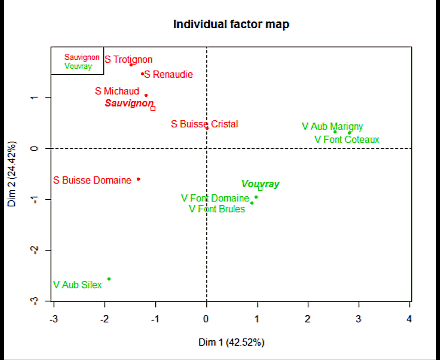Multiple Factor Analysis to analyse several data tables
Want to share your content on R-bloggers? click here if you have a blog, or here if you don't.
How to take into account and how to compare information from different information sources? Multiple Factor Analysis is a principal Component Methods that deals with datasets that contain quantitative and/or categorical variables that are structured by groups.
Here is a course with videos that present the method named Multiple Factor Analysis.
Multiple Factor Analysis (MFA) allows you to study complex data tables, where a group of individuals is characterized by variables structured as groups, and possibly coming from different information sources. Our interest in the method is due to it being able to analyze a data table as a whole, but also its ability to compare information provided by the various information sources.
Four videos present a course on MFA, highlighting the way to interpret the data. Then you will find videos presenting the way to implement MFA in FactoMineR.
With this course, you will be stand-alone to perform and interpret results obtain with MFA.

- Course
- Introduction
- Weighting and global PCA
- Study of the groups of variables
- Complements: qualitative groups, frenquency tables
- MFA with FactoMineR
- Material on the course videos: the slides, the transcription
- Tutorial in R
R-bloggers.com offers daily e-mail updates about R news and tutorials about learning R and many other topics. Click here if you're looking to post or find an R/data-science job.
Want to share your content on R-bloggers? click here if you have a blog, or here if you don't.
